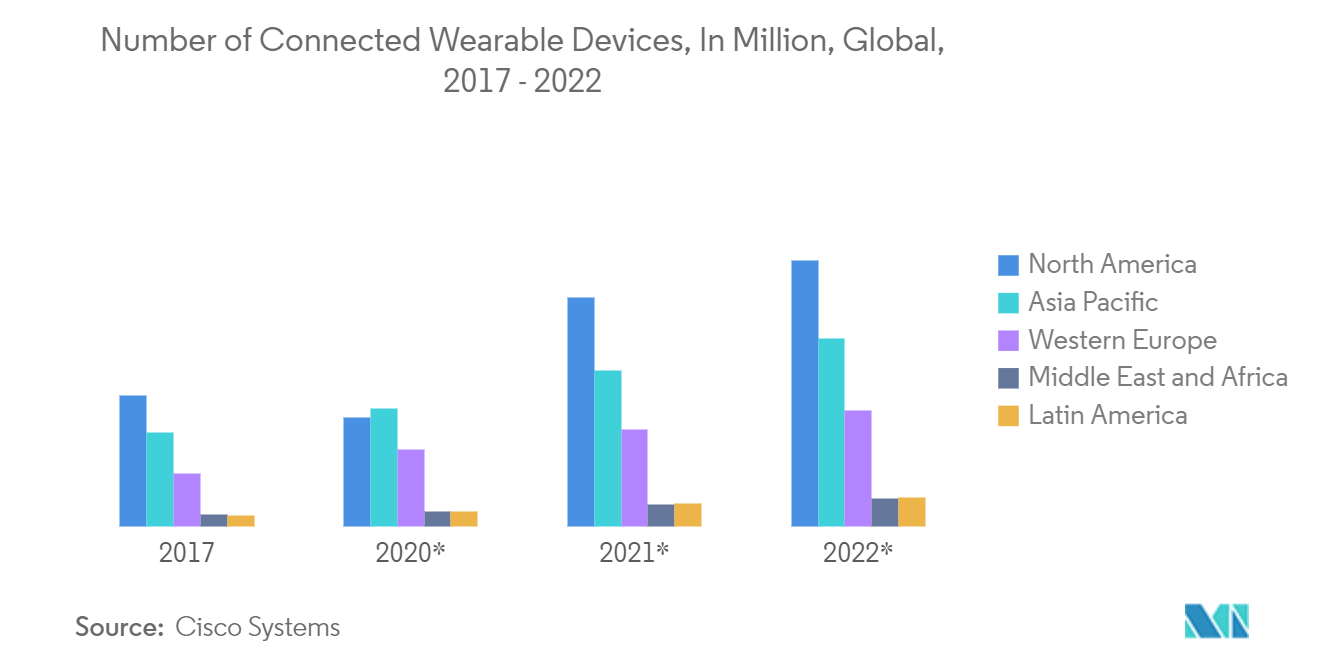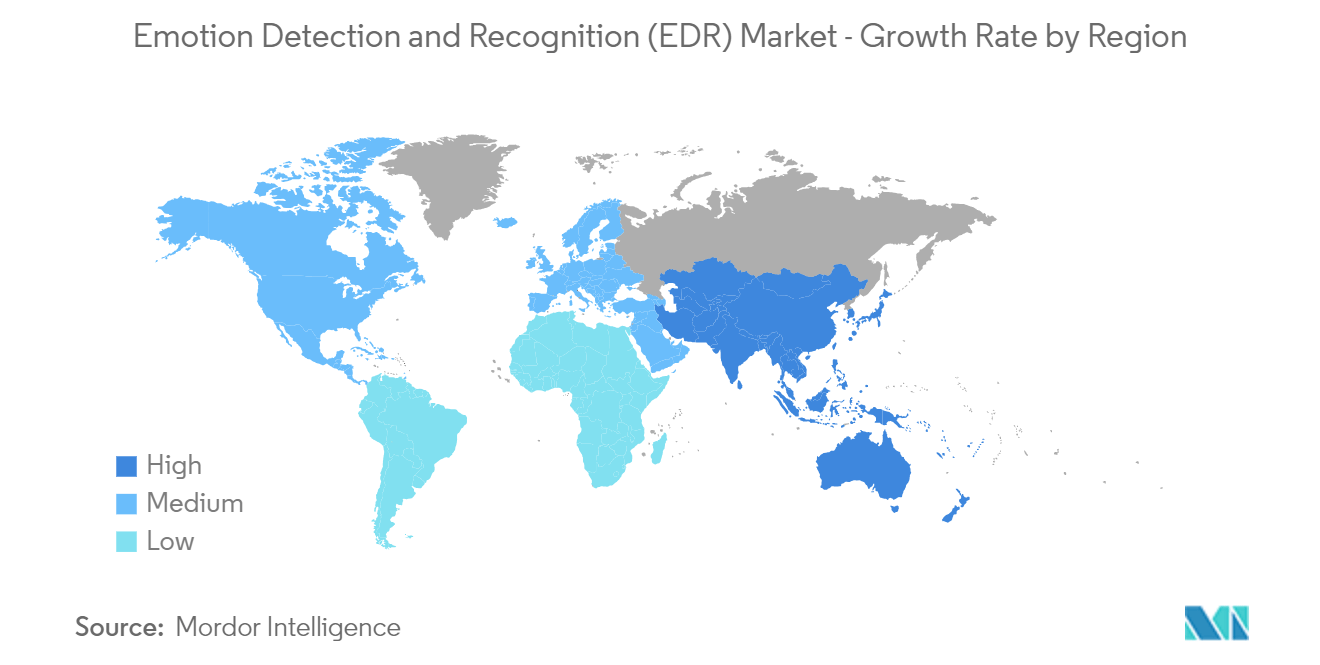Market Trends of Emotion Detection And Recognition (EDR) Industry
Adoption of IOT driven Wearable Devices Driving the Market Growth
- The increasing connectivity and integration of IoT devices and wearable devices offer a vast amount of data that EDR systems can leverage to provide valuable insights into human emotions. This data-driven approach can revolutionize various industries, including healthcare, gaming, smart homes, and personalized experiences.
- The IoT has revolutionized the way devices and objects connect and communicate with each other. According to GSMA, the global IoT connections are estimated to reach 25 billion by 2025, and the IoT market revenue is expected to cross USD 1.1 trillion by the same period. With the integration of EDR technology into IoT devices, such as smartphones, smart home systems, and connected cars, it becomes possible to detect and analyze emotions in various contexts. For example, IoT-enabled smart home systems can use EDR to understand the emotional state of residents and adjust the environment accordingly for enhanced comfort and well-being.
- Additionally, the number of connected wearable devices is also increasing. Such devices have sensors that collect, monitor, and analyze biological vitals, such as heart rate, pulse, and body temperature. According to Cisco Systems, the number of connected wearable devices globally is expected to reach 1,105 million in 2022.
- Wearable devices, including smartwatches, fitness trackers, and virtual reality headsets, have recently gained significant popularity. These devices often include sensors that collect physiological data, such as heart rate, skin conductance, and body temperature. By analyzing these physiological signals in conjunction with other data, EDR systems can infer the wearer's emotional state. Wearable devices offer a convenient and non-intrusive way to gather data for emotion detection and recognition.
- Integrating EDR technology with IoT and wearable devices has particular relevance in the healthcare and well-being sectors. EDR can be utilized to monitor and analyze the emotional state of patients, providing valuable insights for mental health diagnosis, stress management, and personalized treatment plans. Wearable devices with EDR capabilities can track emotional patterns and help individuals better understand their well-being.
- EDR technology integrated into IoT devices and wearable devices has the potential to enhance user experiences significantly. For instance, EDR can enable virtual environments to adapt to the user's emotional responses in virtual reality applications, creating more immersive and engaging experiences. Additionally, EDR can be used in human-computer interfaces to enable devices and systems to respond intelligently to the user's emotions, improving interaction and overall user satisfaction.

North America is Expected to Register the Largest Market
- North America has been one of the leading regions in market size and growth for EDR technology. The presence of major technology companies, innovative startups, and research institutions has contributed to the development and adoption of EDR solutions in the region. The market has witnessed steady growth driven by the demand for advanced marketing tools, personalized customer experiences, and applications in healthcare and wellness.
- North America has been at the forefront of technological advancements, including artificial intelligence (AI), machine learning (ML), and computer vision, which are critical for developing EDR technology. The region has a robust ecosystem of research and development centers, universities, and tech companies that contribute to the continuous innovation and improvement of EDR systems.
- The IoT connections in the region are expected to reach 5.9 billion by 2025. Such growth is expected to enable marketers to attain authentic consumer insights and improve ad targeting. In line with such growth in the demand for IoT, smart wearables, retail sales, and ad spending, the region does not have major stringent data regulations, which further influences the growth.
- The North America EDR market has been fueled by the increasing need for advanced marketing and advertising tools. By analyzing customer emotions and sentiments, EDR technology enables marketers to create personalized and engaging campaigns, optimize advertising effectiveness, and enhance customer experiences. North American companies across various industries, including retail, e-commerce, and entertainment, are adopting EDR solutions to gain a competitive edge in the market.
- The North America EDR market benefits from the region's technological advancements, strong market demand for advanced marketing tools and personalized experiences, and the application of EDR technology in healthcare. However, companies need to navigate data privacy regulations and address ethical considerations to ensure the responsible and transparent use of EDR technology in the region.

